Service: Lighting Design
Toronto Public Library
Wychwood BranchThe Wychwood Library is one of Toronto’s oldest libraries, built in 1915/16 and listed among Toronto's designated Heritage Properties.
HH Angus provided mechanical and electrical engineering for the renovation and expansion of the Wychwood Branch of the Toronto Public Library. Following a feasibility study that identified the desired expansion was possible, the facility expanding from 6,381 ft2 to 15,000 ft2, with mechanical and electrical systems replaced throughout the facility, including new incoming electrical and communication services.
The project included interior and exterior renovations to building structure, mechanical and electrical systems and a complete redesign of the floor space. Necessary facility upgrades included replacing flooring, millwork, furniture, elevator and heating, ventilation and air condition (HVAC) systems and equipment, building systems, and building envelope repairs.
The redesign of this heritage facility created room for approximately 2000 ft2 of seniors’ program space as well as innovative space for youth, both of which were needed in the community.
SERVICES
Mechanical Engineering | Electrical Engineering | Lighting Design
PROJECT FEATURES
Heritage building | Green roof on expansion | Completed 2022
LOCATION
Toronto, Ontario
KEY SCOPE ELEMENTS
Interior and exterior renovation | 2-storey expansion | Mechanical and electrical systems replaced throughout | New incoming electrical and communication services
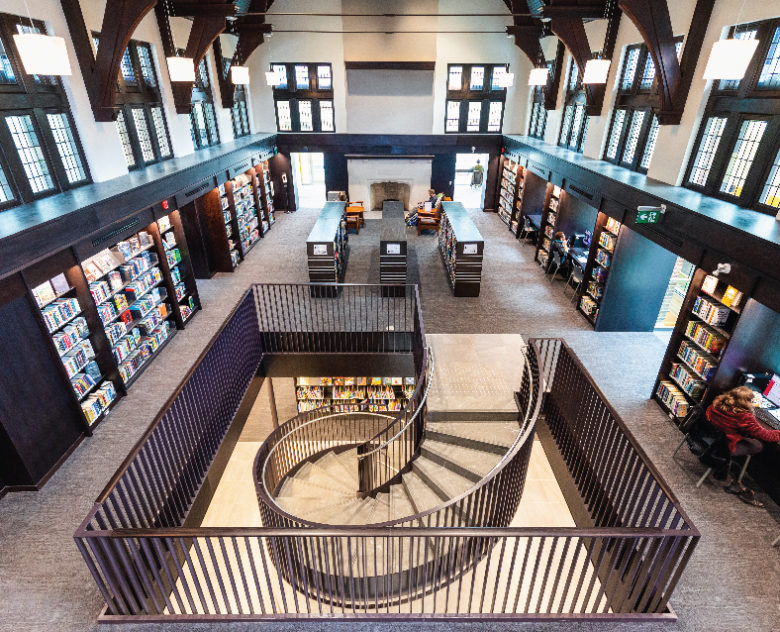
Celebrating heritage
Key features of the original building were maintained and highlighted through the lighting design, which emphasized the brick exterior and vaulted ceilings in the Great Hall.
Header image credits: Shoalts and Zaback Architects Ltd.
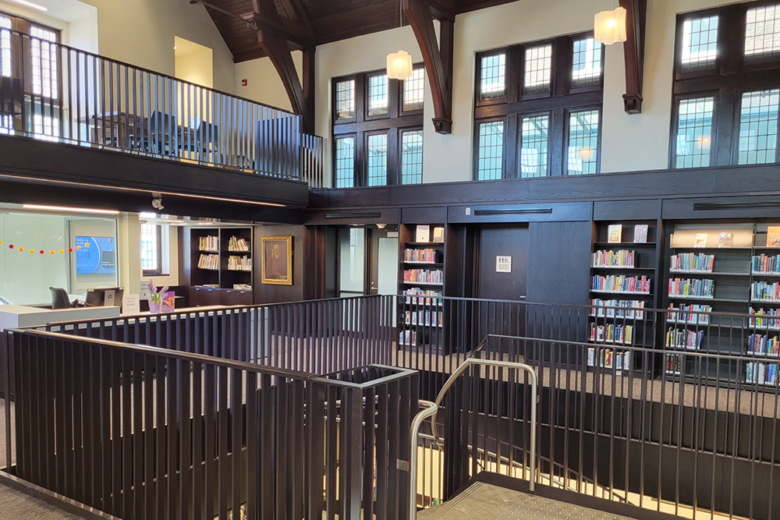
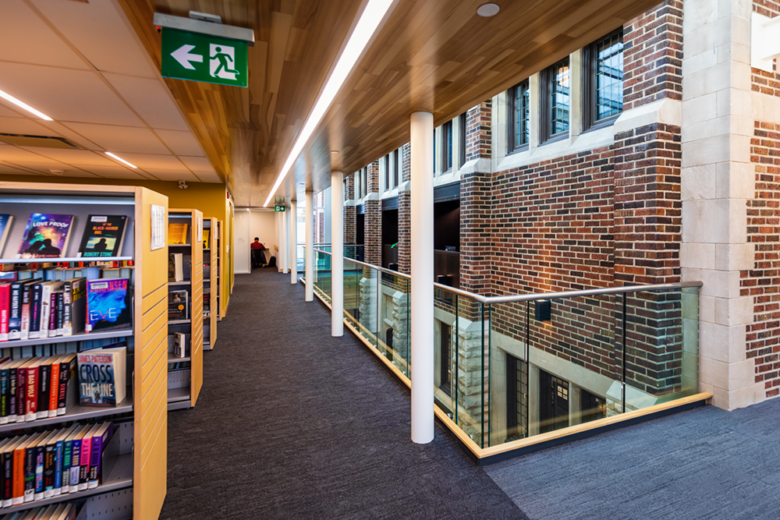
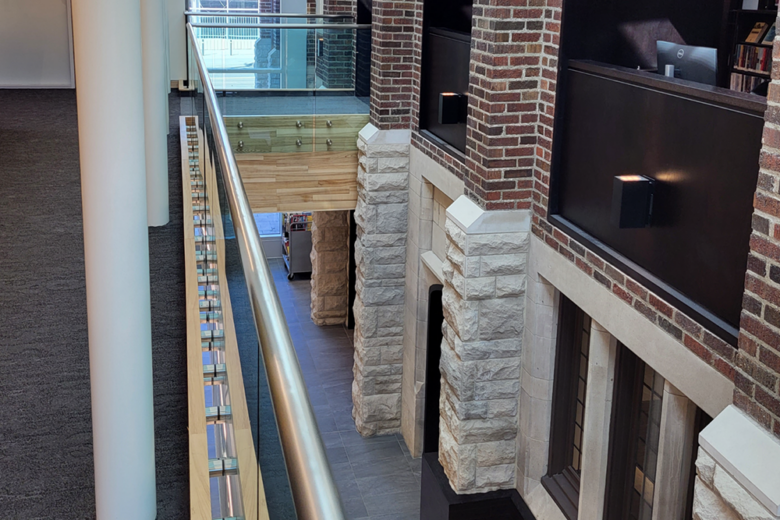
St. Michael’s Hospital
Walter and Maria Schroeder Brain and Heart Centre
“The catheterization lab's capacity is unparalleled and will enable us to make use of state-of-the-art equipment to care for our patients.”
Kim Boswell, Clinical Leader Manager Cardiac Catheterization Labs and Cardiac Arrhythmia Service, SMH
With the Walter and Maria Schroeder Brain & Heart Centre, St. Michael’s Hospital is creating a hub to bring together the world’s best brain and heart specialists, a group of multi-disciplinary experts in engineering and the clinical neurosciences, to develop new therapies for brain-related disorders, such as Alzheimer’s, Lou Gehrig disease (ALS) and Parkinson’s. The new centre will enable patients to be diagnosed, tested and treated in a seamless approach in a single location.
The new catheterization lab, where diagnostic imaging procedures take place to diagnose and treat cardiac issues, is now the largest of its kind inside St. Michael’s, expanding by almost a third of its previous size. The new robotic C-arm will set new benchmarks for precision during various diagnostic imaging procedures.
HH Angus was engaged to provide mechanical and engineering services; lighting design; IT, security, audio visual and communications consulting; and commissioning. Our project scope covered the renovation of an existing Cath Lab, along with associated equipment and control rooms, in order to accommodate a larger footprint and new state-of-the-art medical and imaging equipment.
The project design was future proofed with the expanded Cath lab providing increased capacity for cardiac procedures, thanks to a requirement to design the procedure area to be flexible enough for use as an Operating Room in future. It also includes state-of-the-art audio visual capabilities, with live data streams displayed on electronic screens throughout the room. Future capabilities include extensive video and audio feeds from within the room, as well as the ability to videoconference and live-stream procedures to locations both within and outside St. Michael’s. This will facilitate education, research and external consults.
Upgrades included: medical gas system and alarm replacement, including the installation of an articulated service boom; eventual conversion from passive to active scavenging system; ventilation system; and two new neuro interventional bi-plane suites, enabling image-guided and minimally-invasive procedures.
Challenges met by our project team include:
- Designing the space to meet a Hybrid OR environment, including supplying 20 air changes per hour above the patient care area with limited ceiling space
- Creating flexible ventilation design to allow future connection to a new air handling system, without causing major shutdowns to or rework of the existing space
- As a partial solution to #1, installing a combined lighting and air supply product (EH Price Ultrasuite), which had not yet been implemented anywhere in Canada, and ensuring all local code requirements were met.
- Coordinating the complex video requirements of multiple specialized medical systems in order to route diagnostic-quality video and audio feeds appropriately.
Read about other projects at St. Michael’s Hospital
Barlo MS Centre
Li Ka Shing Knowledge Institute
Photo courtesy of Unity Health
SERVICES
Mechanical Engineering | Electrical Engineering | Lighting Design | Security | Communications | Audio Visual | IMIT | Commissioning
PROJECT FEATURES
Status: Completion 2020 | Future-proofed design with flexibility to permit re-purposing of procedure area
LOCATION
Toronto, Ontario
KEY SCOPE ELEMENTS
Cardiac catheterization lab | Hybrid OR environment
Town of Havelock
Long Term Care ResidenceThe greenfield Havelock long term care facility features power redundancy for heating and cooling, allowing the residential facility to remain fully operational in the event that both power and natural gas are unavailable under emergency conditions.
This 91,000 ft2 greenfield residential facility is a mass timber project, consisting of 128 beds, a 5000 ft2 medical clinic and support spaces, including a kitchen, four dining areas, and communal spaces such as lounges and meeting/activity rooms.
HH Angus is providing mechanical and electrical consulting engineering, as well as lighting design. The mechanical design includes a new hot water heating plant and distribution systems. Rooftop units have been designed with energy recovery ventilators to recover heat from washroom exhaust. A chiller system will provide cooling for the units and boilers will provide the heat. The project is designed to meet CSA Z317.1 standards.
Our design team was challenged to provide suitable fire protection to this mass timber project, equipping the entire attic with fire protection service. In order to avoid excessive heat tracing, a nitrogen dry sprinkler system was used.
The lighting control system has been designed to provide the residence with optimal comfort through the use of daylight harvesting. A mixture of automatic, manual and scheduled controls were specifically designed to allow residents individual control while providing the owner the flexibility to identify areas where energy consumption can be reduced.
SERVICES
Mechanical Engineering | Electrical Engineering | Lighting
PROJECT FEATURES
Sice: 91,000 ft2 | Completion estimated for 2021 | Greenfield mass timber project | Power redundancy for emergency operation | 128 residential rooms | Medical clinic | 4 dining areas | Communal meeting spaces
LOCATION
Havelock, Ontario
KEY SCOPE ELEMENTS
Dual source boiler | Perimeter heating | daylight harvesting | Rooftop energy recovery ventilators | Designed to met CSA Z317.1
St. Michael’s Hospital
Barlo MS Centre
Canada has the highest rate of multiple sclerosis in the world; in fact, the disease is known internationally as ‘Canada’s Disease’. St. Michael's Hospital in Toronto is one of North America's busiest MS centres. It has been caring for people with MS since 1981, and now treats 7,000 patients.
The new Barlo MS Centre offers one-stop care, bringing together neurologists, nurses, social workers, neuropsychologists, physiotherapists, occupational therapists and speech therapists in a world-leading treatment and research centre for multiple sclerosis. The 25,000 ft2 clinic has been constructed on the top two floors of the new Peter Gilgan Patient Care Tower.
HH Angus’ mechanical scope for the fitout of the shelled space included ventilation, plumbing, medical gas, heating & fire protection, and controls. Our electrical scope covered power, lighting, communications and security.
Unique aspects of the project's design included: presentation to the client of a number of ventilation strategies to address the shortage of air supply available to the design, and a reworked ventilation strategy under a very aggressive schedule to redistribute and extend air to the clinic from an existing air handling unit that was previously feeding another floor.
Some of the project challenges included:
- The addition of a compounding pharmacy late in the design, for which additional requirements had to be vetted to meet NAPRA. The team took advantage of early works to investigate available shaft space for running new biological exhaust to the roof.
- Design activities had to be scheduled concurrently with testing and commissioning still underway at the time for the main Patient Care Tower.
- Ceiling construction and new structural constraints limited accessibility. The team used 3D imaging and Revit to coordinate all ceiling elements requiring accessibility, in order to integrate services into areas with wooden slatted ceilings.
- The team took advantage of early works to coordinate structural openings for future ventilation in order to limit ceiling interference for the fitout design.
SERVICES
Mechanical Engineering | Electrical Engineering | Lighting | Plumbing | Communications Systems | Security Systems
PROJECT FEATURES
Size: 25,000 ft2 | Status: Completion 2021
LOCATION
Toronto, Ontario
KEY SCOPE ELEMENTS
Two floor clinic fitout | Variety of room types and functions | Custom smoke venting and fire alarm zoning to accommodate feature staircase
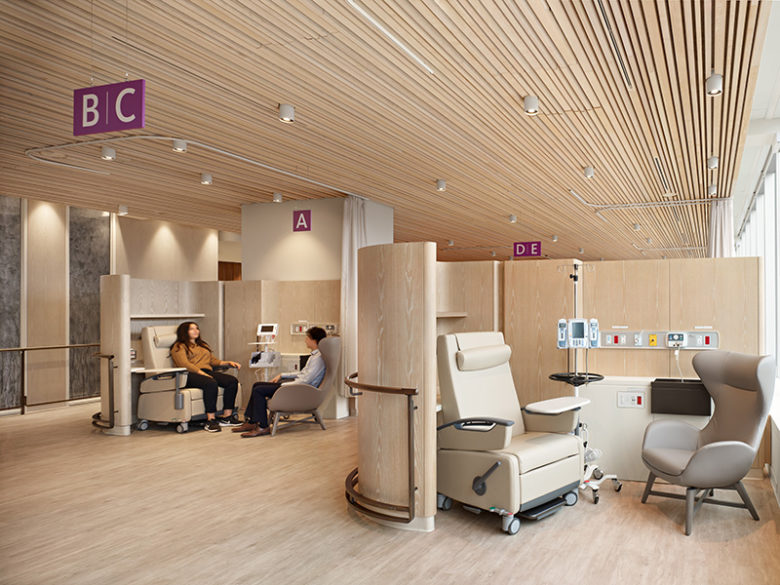
Achieving the design vision
We worked closely with the architect to modify the existing fire alarm zoning and smoke venting strategy in order to accommodate a new mezzanine on Level 17. This allowed the architect to achieve the design vision for the feature staircase without the use of smoke baffles.
Variety of functions
The space includes a variety of room types, including exam rooms, gym, medical infusion centre, group physiotherapy studio, auditorium, cognitive lab and a pharmacy.
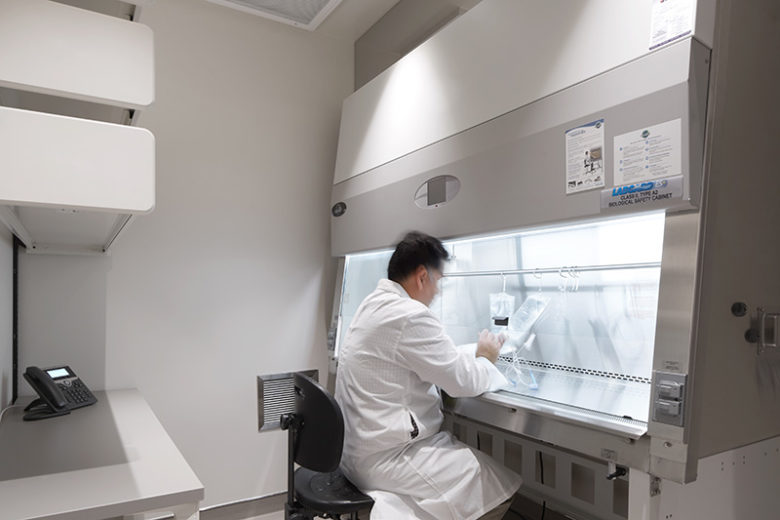
Click here for the St. Michael’s Hospital video feature on the Barlo MS Clinic.
Toronto Transit Commission
Easier Access Program - Subway Station UpgradesThe TTC’s ongoing Easier Access (EA) Program is making public transit more accessible for customers. The entire subway train fleet is accessible, and more than half of Toronto’s subway stations are wheelchair and scooter friendly.
HH Angus has been providing vertical transportation consulting and mechanical and electrical engineering to the TTC since 2010, as the transit system implements EA accessibility upgrades. This involves the design and construction of new elevator systems, as well as changes to the electrical and mechanical systems needed to accommodate the addition of EA upgrades across the subway system.
At the Wellesley Station, for example, two new elevators have been added. The work to support this upgrade included hydraulic, electrical, mechanical, structural and architectural components, along with the detailed project coordination aspects related to renovations.
Some of the challenges associated with the EA renovations include emphasis on limiting space requirements for new subsoil structures, reduced encroachment on property lines, reduced access limits for new equipment installations, relocation of existing services, and routing of new services through very confined and limited space, all requiring very specific, detailed and well-coordinated design.
Detailed coordination between all disciplines regarding all aspects of the project must be part of the design phase to minimize the potential for contractor-claimed extras during construction. For example, quick turnaround times for construction support activities must be adhered to, in order to achieve the construction schedule.
Some of the key success factors in EA upgrade projects include:
- Thorough site investigations prior to design to confirm all as built information. This is critical to determining where new services will be located and connected to existing services, in order to avoid any interference with those services, and to identify where relocation of existing equipment may be required.
- Close coordination between all disciplines to ensure a) the responsibilities of all project team members are clearly defined, and b) that the design is fully buildable without additional unknown factors; for example, avoiding issues that can arise from incomplete or outdated as built drawings.
-Having all stakeholders review the design, with all comments being addressed prior to Issued for Bid stages.
Over twenty subway stations are already complete or currently have upgrades in design or construction:
Union | St. George | Pioneer Village | Kennedy | St. Clair West | Queen | Bay | Ossington | Lansdowne | Museum | Lawrence | Yorkdale | Yonge/Bloor | Finch West | Kipling | Warden | Bathurst | Jane | Sherbourne | Wellesley | Christie | Keele | Rosedale | Chester
SERVICES
Vertical Transportation | Mechanical Engineering | Electrical Engineering | Lighting Design
PROJECT FEATURES
Status: Ongoing system-wide upgrades for subway stations to provide accessibility | Mechanical, electrical and lighting system renovations and upgrades to support vertical transportation installations
LOCATION
Greater Toronto, Ontario
KEY SCOPE ELEMENTS
Design Build | Work within confined and limited space | Rapid turnaround on construction activities support to achieve schedule
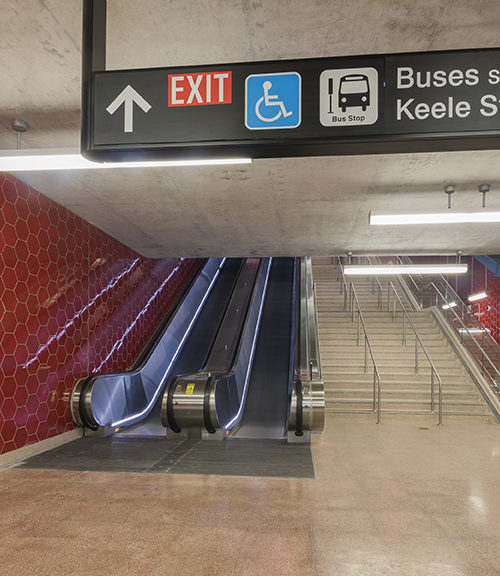
Space constraints
Because space for EA projects is very limited and within a confined area, all construction details must be effectively designed to ensure constructability.
